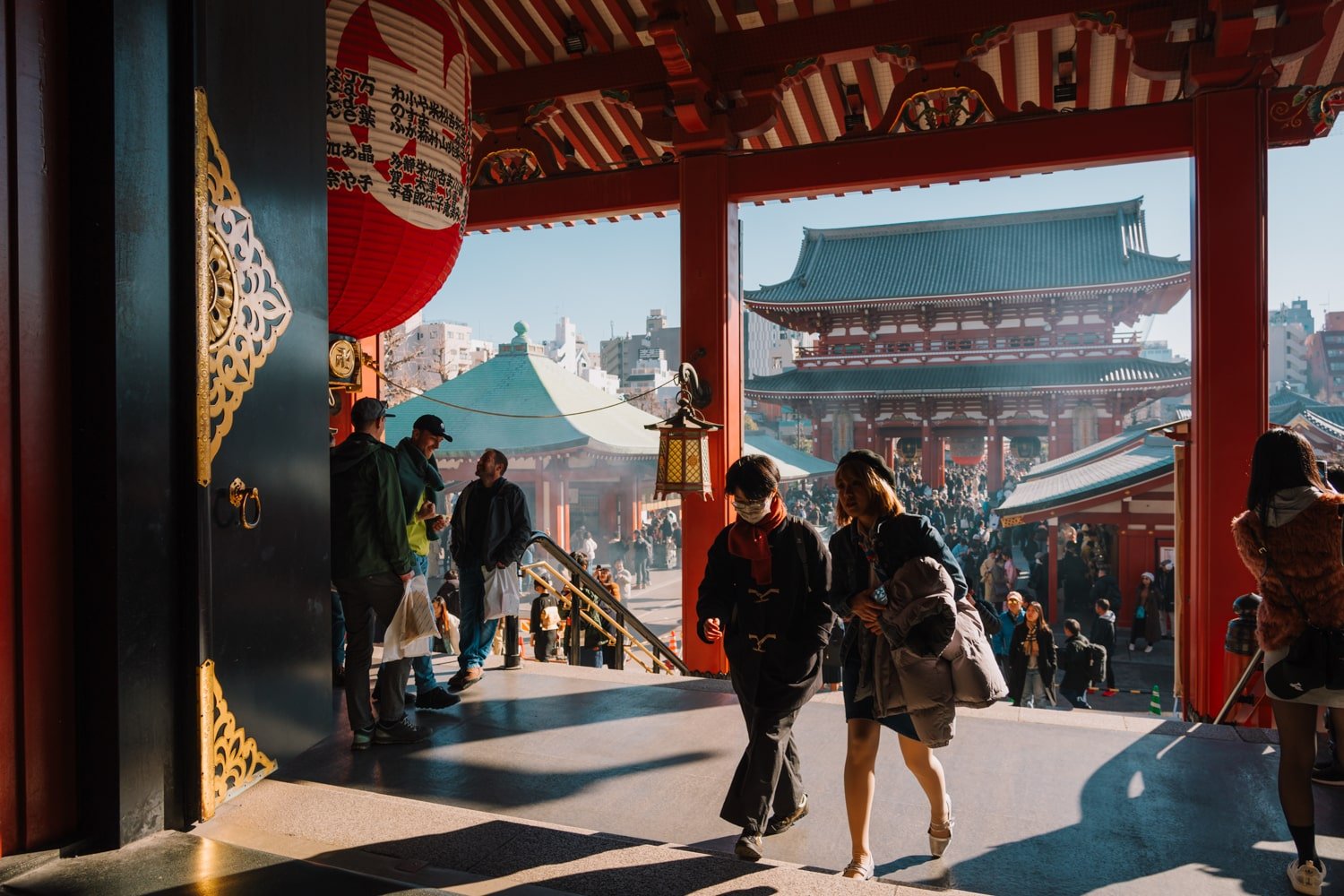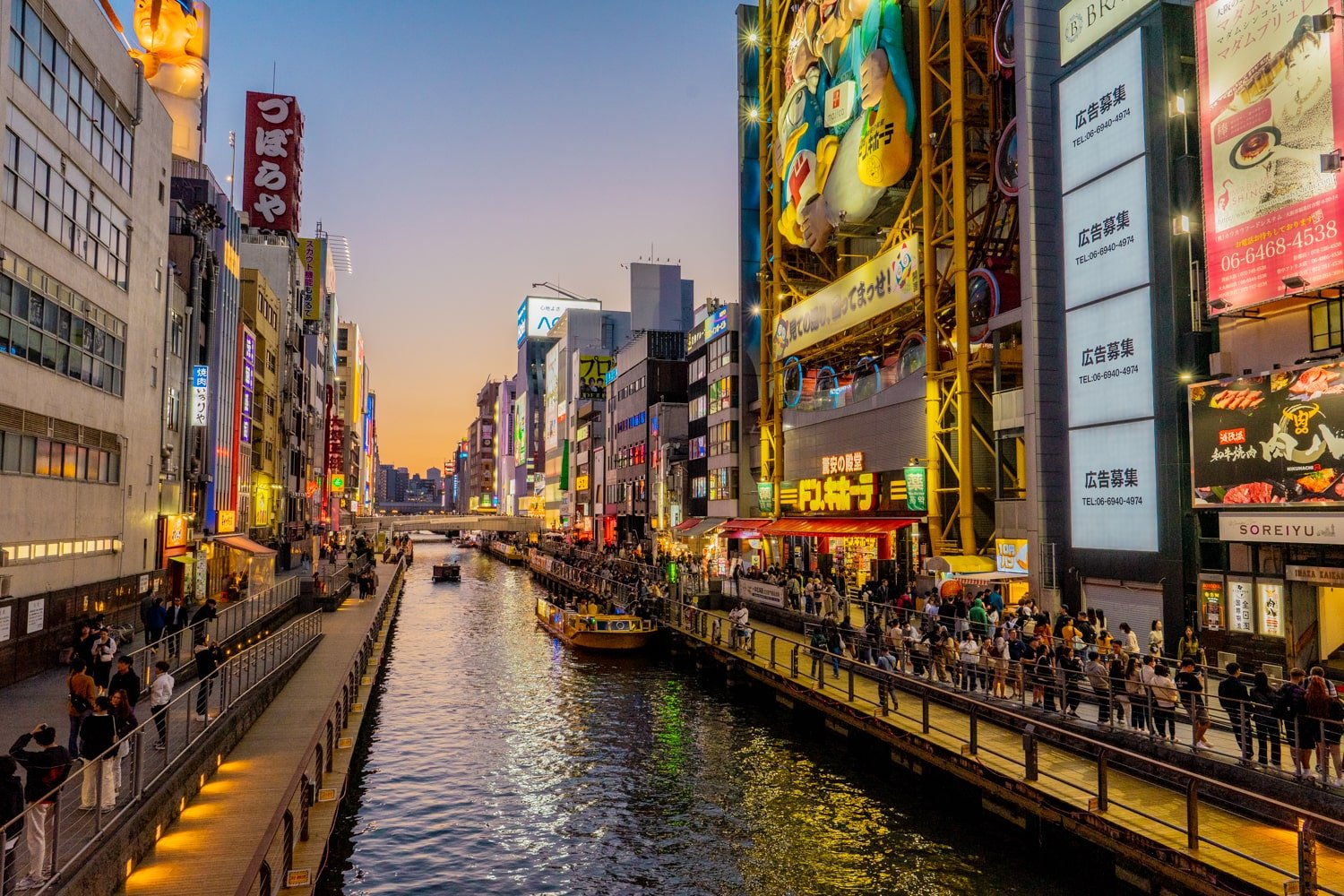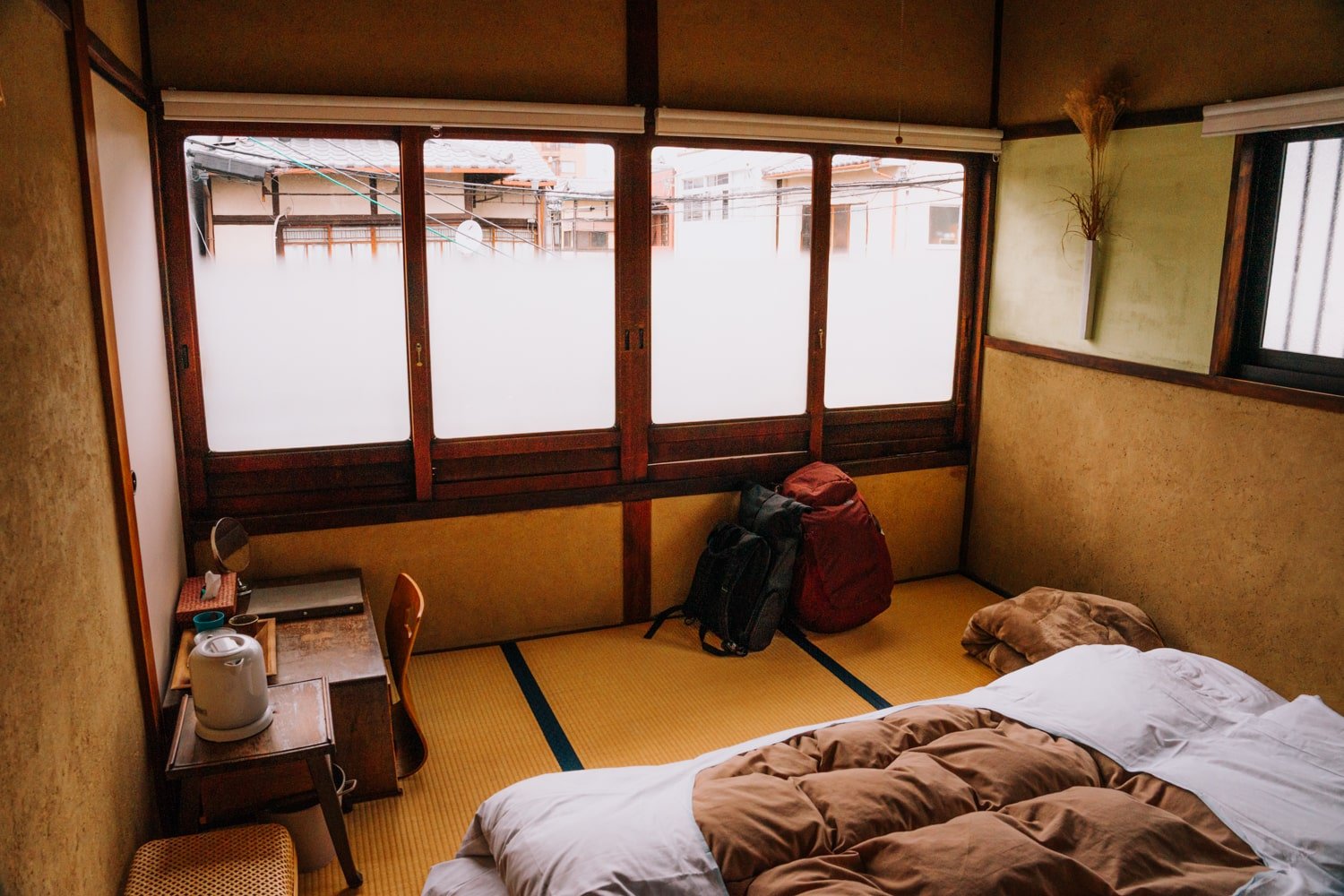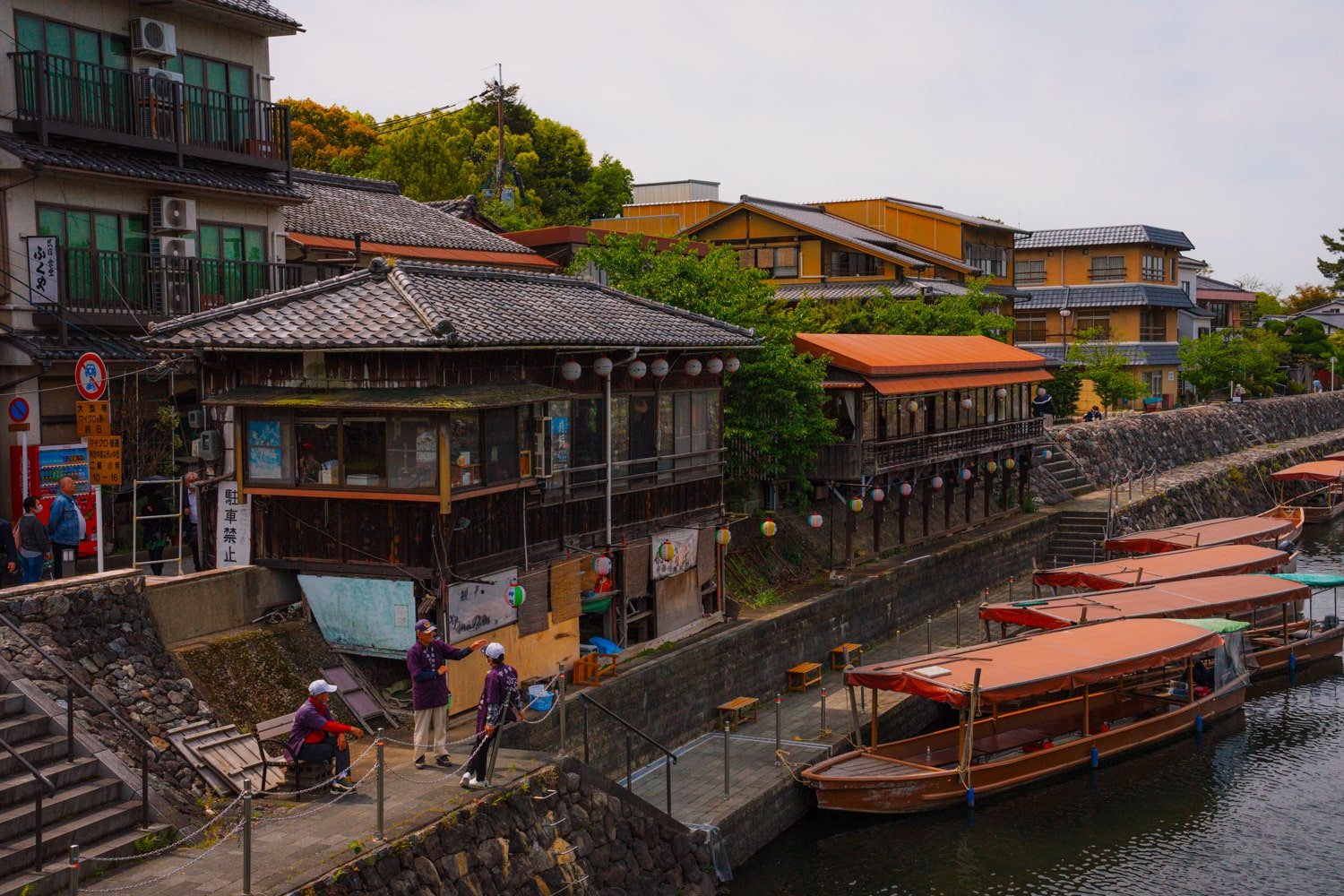Japan’s Digital Nomad Visa: Everything You Need to Know!
9 min readIt’s my dream come true — a digital nomad visa for Japan! After living in several countries as a long-time digital “slomad,” I had always hoped (but never expected) that...
The post Japan’s Digital Nomad Visa: Everything You Need to Know! appeared first on Bucketlist Bri.
It’s my dream come true — a digital nomad visa for Japan!
After living in several countries as a long-time digital “slomad,” I had always hoped (but never expected) that Japan, of all countries, would launch a digital nomad visa in 2024. But here we are!
This guide spills all the juicy must-knows for applying for Japan’s digital nomad visa launching this March 2024.

Disclaimer: This post contains affiliate links that may earn me a small commission should you decide to click through and make a valid purchase (at no extra cost to you). Thanks so much for your support!
First off, Japan’s new visa will finally allow digital nomads to stay beyond the 90 days given to visitors from visa-exempt countries upon arrival.
So exactly how long will digital nomads be able to stay in Japan?
The Japan digital nomad visa will allow employed remote workers and self-employed workers/freelancers to live, work, and travel in-country for up to six months. 🤩
Imagine… a six-month Japan trip from spring to fall (the best months to visit), during which you’ll get to see it all: from cherry blossoms in the spring to the colorful autumn leaves, and all the wonderful events and festivals in between!
You could spend six months soaking up old and new Tokyo, spend weeks uncovering charming Kyoto and eclectic Osaka, or even be on the move each month and travel across Japan’s 9 diverse regions and 47 prefectures for the entirety of your stay.
Skiing in Hokkaido? Beaching it up in Okinawa? Sauntering in remote samurai villages?
If you’re a Japanese-loving digital nomad like me, all of that sounds like a Ghibli fantasy come true!

No more trying to stuff all the best of Japan in a 10-day itinerary; with Japan’s digital nomad visa, you’ll get to slow travel across Japan in a way most tourists don’t get to — experiencing deep travel and the Japanese culture in a meaningful way and savoring it all (literally, you better slurp up lots and lots of ramen!). 🍜
It all sounds great, right? So… is there a catch?
Japan’s digital nomad visa has a few constraints and requirements.
Read more below for details on who the new Japan digital nomad visa is for, the requirements to apply (and get approved), and what to expect next! ⬇️
show
The Complete Guide to Japan’s Digital Nomad Visa
The Japan Digital Nomad Visa in review:
- Be from one of the visa-exempt 49 countries or regions with a tax treaty
- For stays up to six months (renewable after departure)
- Earn a steady annual income of ¥10 million (roughly $68,300 or €62,000)
- Have private health insurance
- Spouses/children allowed to accompany the applicant
Eligibility Requirements to Apply for Japan’s Digital Nomad Visa
The final version of the digital nomad visa is still unpublished, but here are the latest details from Japan’s Immigration Services Agency (ISA).
Be a citizen from a visa-exempt country with a tax treaty
Citizens from 49 countries and regions with a tax treaty are eligible to apply for Japan’s digital nomad visa once it launches end of March 2024.
Keep in mind that Japan has a list of 70 visa-exempt countries and regions, but not all of them are eligible to apply for the nomad visa; only those visa-free countries with tax treaties.
For now, that includes:
- United States
- All member countries of the European Union, plus (according to EuroNews) Armenia, Belarus, Georgia, Iceland, Liechtenstein, Moldova, Monaco, North Macedonia, Norway, Serbia, Switzerland, Turkey, and the United Kingdom
- Australia, Singapore, South Korea
While the final version of the new visa isn’t yet available, there shouldn’t be any surprises or changes when it comes to who is eligible.
Must earn JP¥ 10 million per year
The income requirement to apply—and get approved—for the digital nomad visa is 10 million yen, which roughly converts to 68,300 USD or 62,000 EUR. In USD, that translates to a steady $5,700 per month.
That is quite steep compared to the 50-ish other countries offering digital nomad visas.
Have private health insurance
Since visa holders will not be allowed to enter into the Japanese national healthcare system, private insurance will be required.
Right now, it’s unsure what type of insurance it covers.
For example, a lot of nomads such as myself have private travel medical insurance through SafetyWing, but that coverage might not be enough for the Japan visa. Details on the insurance requirement have yet to be published.

Current Concerns & Amendments of the Digital Nomad Visa for Japan
Inclusivity?
While those requirements don’t seem outrageously unattainable for many well-established, employed Western digital nomads from North America or Europe where the € or $ is strong, this visa has already spurred debates about catering to the “rich nomad” which I don’t like.
Most nomads (at least those like me: self-employed, seeking no-frill experiences and adventures) are budget-conscious, hence why they live in destinations that favor a low-cost lifestyle such as Indonesia, Thailand, Mexico, India, Colombia, etc.
So unless they’ve been established already for several years, many self-employed digital nomads who are writers, creatives, etc., won’t hit that figure per year.
Remote workers employed by international companies, though?
That might be a different story, as I know a lot of mid-late nomads in their 30s earning quite well as coders, software engineers, project managers, etc.
In turn, that means the high-income threshold can be restrictive for Asian digital nomads or Latin digital nomads who don’t earn that much, especially because they are losing when converting to yen.
Note that the current criteria and restrictions surrounding Japan’s soon-to-launch digital nomad visa have not yet been finalized, so this may change pending public feedback.
On February 2, 2024, there was a public call for comment by the Policy Division of the Immigration Agency (出入国在留管理庁) welcoming feedback and comments on the new immigration system proposal.
So, while we await the finalized version, the income threshold may change or be adapted to be more inclusive of non-Western countries currently eligible/existing under the tax and visa-exempt treaty.
Cannot register for insurance or residency
Other possible drawbacks or restrictions include not being able to file for temporary residency, which some other countries offer (which is why, for example, Mexico is so popular for digital nomads and foreigners).
What’s more, one such amendment suggests that the “digital nomad visa holders cannot become residents of Japan, they will not be issued a Japanese residence card, they cannot register their address in Japan, they cannot join the National Health Insurance system.”
Of course, this right now is all still under construction but I’m super eager to see how the Japanese government plans to concretize this new system soon.
Must wait 6 months out of Japan to reapply (cannot renew)
Since the digital nomad visa is a part of the new immigration system rolling out, we can expect more restrictions to develop as the government works out the kinks.
For now, eligible applicants will be approved for a stay of up to six months maximum.
According to this Fukuoka Law Office article, those who wish to extend can only do so after exiting the country and waiting six months to reapply.
So if you start your digital nomad life in Japan in April and stay for six whole months, you won’t be able to reapply for another six months until March the following year (six months in, six months out).
Potential shortage & pricey accommodation rentals
My other concern with the Japan digital nomad visa is that rent for locals could skyrocket as digital nomads may be able to pay more for shorter-term rentals.
This was the case for digital nomads in Lisbon, for example, and the reason why the city has become almost unreasonable for Portuguese locals and students who continue to move further outside the city center just to be able to afford rent.
On the flip side, we can also expect a lot more “digital nomad amenities” such as coliving spaces and laptop-friendly cafes to pop up and become more frequent. 💻
Let’s just hope that Airbnb prices don’t increase too much (or at least that they do become more flexible to accommodate monthly stays.

How to Apply for Japan’s Digital Nomad Visa
Right now, the digital nomad visa for Japan is accepting public feedback and is not accepting applicants.
Stay tuned for how to apply for Japan’s digital nomad visa as soon as it becomes available.
I will be updating the article as soon as the Immigration Agency shares more details. 🤗
Why Is Japan Launching a Digital Nomad Visa Now?
The original purpose and intent for the new digital nomad visa was reportedly to boost inbound travel to Japan as part of the “new capitalism growth and distribution policy” that was drawn up summer of 2023. The initiative aims to boost not only tourism but also fill in labor shortages.
Justice Minister Ryuji Koizumi is cited in a press interview claiming digital nomads to be a “source of innovation.”
And maybe it’s a coincidence, but… Have you noticed that everyone just seems to be super hyped about Japan right now?
Bruno Mars, Taylor Swift, and all your friends on Instagram… (including me, haha) were recently sweeping through Japan.
While Japan has always been a coveted destination, it’s currently on the rise as one of the top places to visit on travelers’ bucket lists.
Not only that but thanks to the post-pandemic boom of remote work, more people are seeking out a work and travel lifestyle and are picking Japan as their preferred base.
News sites such as CNBC and TimeOut have both cited Nomadlist.com—a popular website that pools data for top digital nomad cities around the world—for its statistics naming Tokyo as the fastest-growing digital nomad hub in the world, seeing a near-70% increase in digital nomads from 2018–2022, which is a striking figure.
It’s no secret what influence digital nomads can have on economies either.
Other popular places and countries in Asia (mostly Southeast Asia) such as Chiang Mai, Thailand, and Bali, Indonesia have seen the sheer force and economic power of digital nomadism thanks to their low cost of living, so Japan entering the game is sure to shake things up as it redirects some digital nomads looking to delve deeper in Japanese culture.
But as is the case with “hotspots” such as Bali or even Tulum, Mexico, digital nomads can have serious economic and environmental consequences.
Will Japan’s New Digital Nomad Visa Be Problematic for Locals?
It’s hard to say now how Japan’s plan to allow foreigners extended stays to work and travel in-country will impact local communities. But I hope it’s for the better.
Unlike rapidly developing destinations like Tulum or Bali, where geo-arbitrage and environmental strains are more common/at risk, Japan has a solid infrastructure and a stable local economy in place that could potentially be less influenced by the influx of remote workers and digital nomads.
Of course, if we look at digital nomads through the ethical travel lens, then it’s obvious that, while economic prosperity is a positive outcome, there can also be negative consequences (which will come to light months or even years down the road!).
For now, all we can do is try to be responsible travelers and digital nomads at the individual level.

My Thoughts About Japan’s New Nomad Visa
As a digital nomad, I think bringing this diversity to Japan could be beneficial for its future growth. Much of Japan’s population is elderly, and there are lots of towns and traditional homes that are emptying.
Diversity fosters growth in more areas than just GDP; art, culture, literature, sustainability, and more, will benefit from this new immigration policy.
I hope that Japan will not become Western-washed with the increase in foreigners and nomads coming in to take up space.
Instead, I hope it will be able to integrate foreign digital nomads (from across the globe, not just the elite West), in a way that preserves and protects Japan’s rich cultural heritage and customs.
All in all, I’m so excited for Japan just as much as I am for the incredible once-in-a-lifetime opportunity to be able to slow-travel in Japan as a digital nomad!
What do you think about the rise of digital nomads in Japan and this new visa? Feel free to drop your questions and thoughts in the comments below!
<!–
–>



